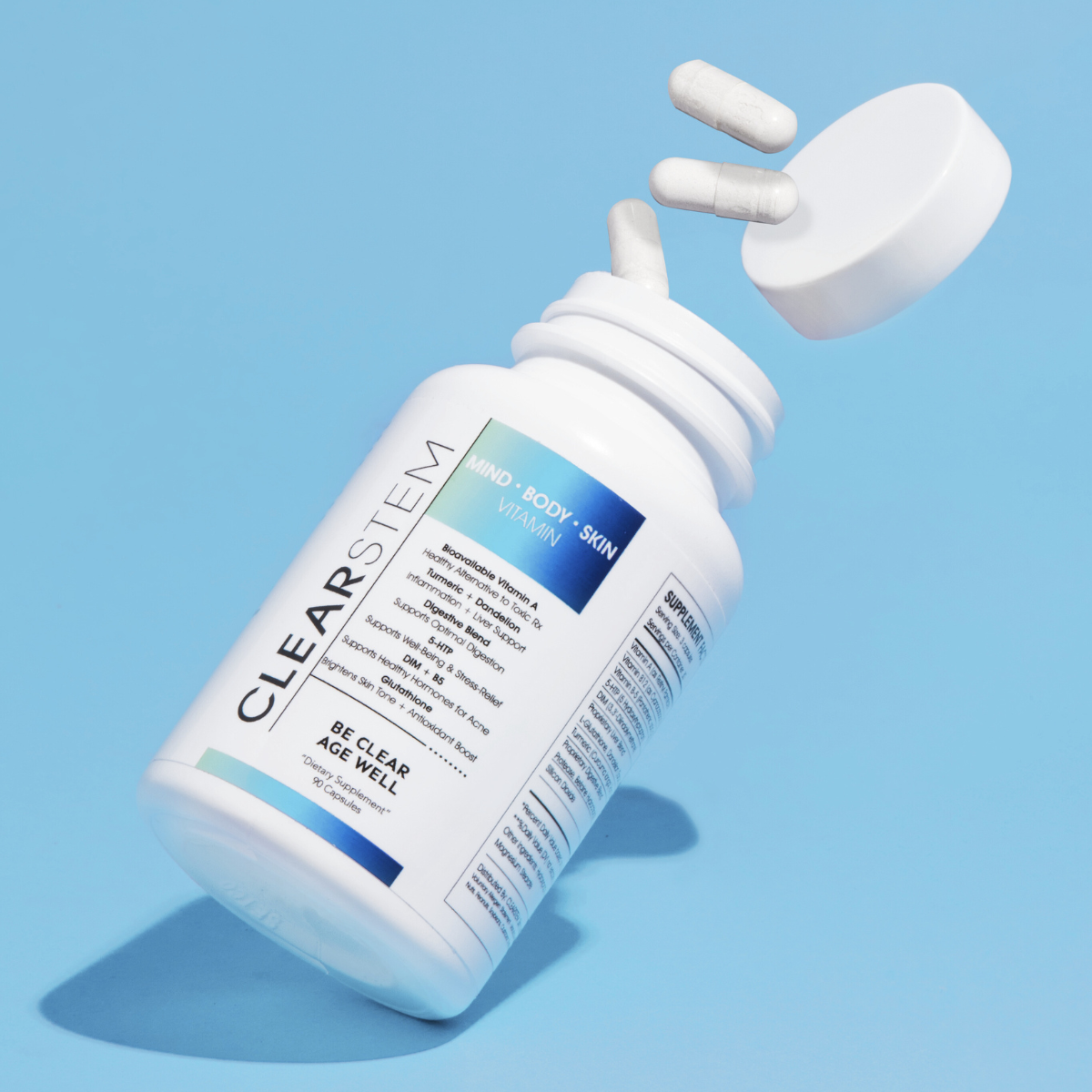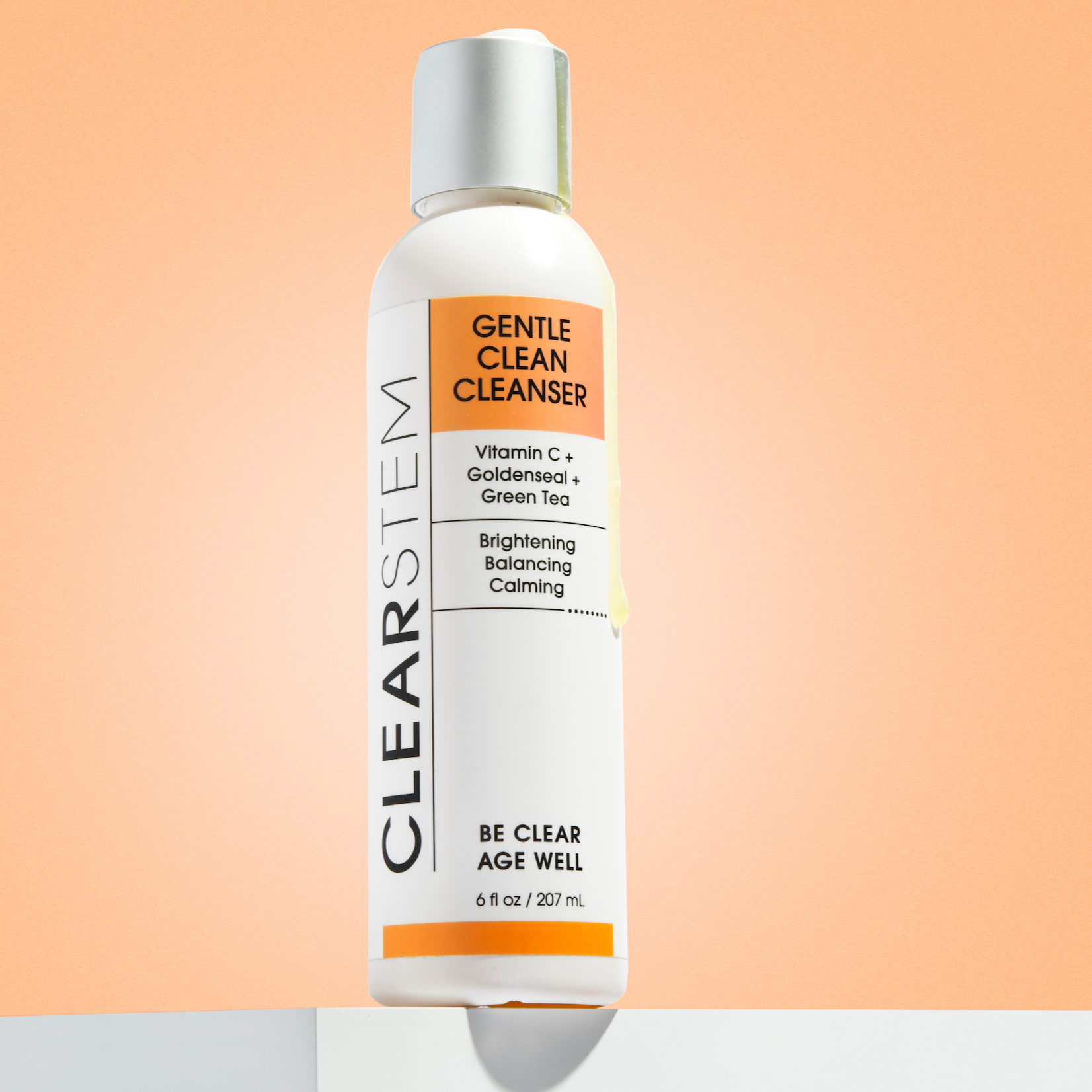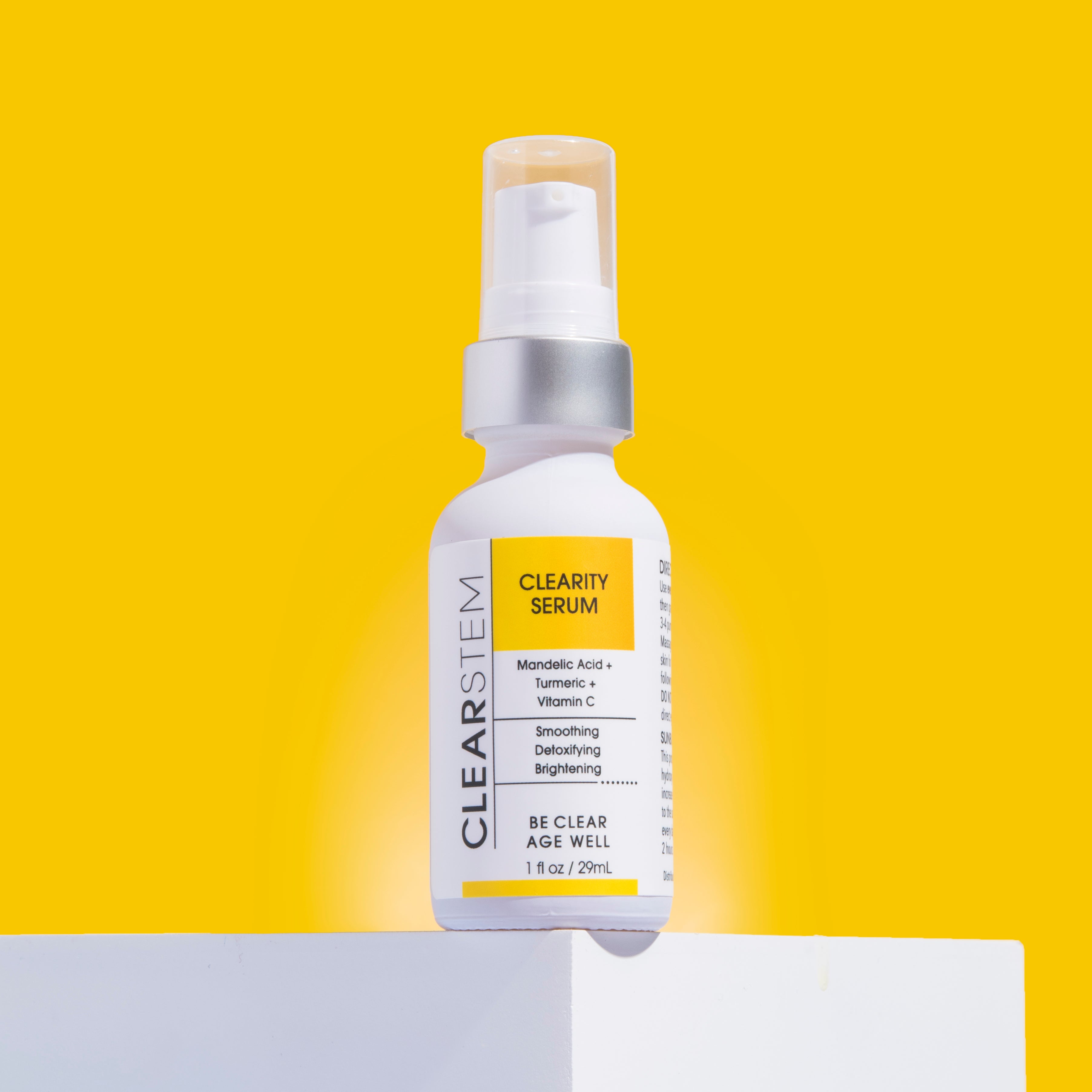As humans, the tireless pursuit of youthful good looks is definitely nothing new. Even when Hernando De Soto landed in Saint Augustine some five hundred years ago, his goal was none other than seeking out the fabled Fountain of Youth and capitalizing on its purported benefits.
While he may not have succeeded in his endeavors, that doesn’t mean that it doesn’t actually exist, though. In fact, you could even argue that we’ve already found it. And, as it turns out, it was actually right underneath our noses all along.
Rather than being tucked away in a stinky underground spring, the secret to young and beautiful skin was hidden inside a plant extract all this time. Called “bakuchiol,” this natural compound is literally changing everything we know about skincare – and for good reason!
What is Bakuchiol?
When it comes to skincare, finding products that are as close to the natural source as possible is essential. So many products out there are synthesized from a lab, leading to a scary chemical cocktail that can leave serious side effects in their wake.
Bakuchiol, however, comes from the seeds and leaves of the babchi plant. Completely natural and ethically sourced, this organic extract has been clinically proven to deliver a host of benefits when applied to the skin.
But, what is bakuchiol? In brief, bakuchiol is a monoterpene phenol. (1)
In layperson terms, this means that it’s a type of aromatic organic compound found in plants. Sure, it sounds fancy, but what really sets it apart is the incredible benefits it imparts to your epidermis.
Bakuchiol has actually been used for centuries as a type of traditional medicine throughout Asia, and its known benefits have been documented extensively over the years. For instance, people have historically used it to treat psoriasis, leprosy, and even vitiligo. (2)
It also has been shown to have powerful anti-inflammatory benefits, too, further contributing to its impressive resume. That’s not all, either. It’s been shown to help to stimulate collagen synthesis, which is a huge deal, as that’s one of the biggest biomarkers for advanced age in people. (3 & 1)
In addition to trying to understand what it is, though, it’s also important to distinguish what it isn’t. Unlike retinoids, bakuchiol is not a vitamin A derivative. Instead, it’s a functional analog of a retinoid. (1)
In other words, you’re going to start to notice the benefits of using it, but without all the nasty and unwelcome side effects that can come from using a retinoid. Pretty amazing, right?
What is Retinol?
When it comes to reducing the signs of aging, retinoids have always been considered the gold standard. After all, they’re clinically proven to work, and they have years of research backing them up. But before you get all excited to try them out, let’s dive into them a little deeper. (4)
Retinol, as you might’ve already heard before, is a somewhat milder form of a retinoid. And, as we pointed out, retinoids are a vitamin A derivative. In plain language, it means it functions similarly to vitamin A in your system, sort of like a second cousin twice removed in your family tree. (5)
They’re not biologically active on their own, though, and require a little extra effort from a type of chemical called “cytosolic alcohol dehydrogenases” and “microsomal retinol dehydrogenases.” Yep, it’s a mouthful.
But wait, it’s not that simple. We’re just getting started here. From there, it needs to undergo a handful of other chemical processes, like oxidation by retinaldehyde dehydrogenases, until it finally becomes retinoic acid. (6)
In other words, it’s literally the opposite of all-natural. Retinol is also extremely powerful, too – which is why you shouldn’t just slather it onto your face all haphazardly without first doing your due diligence.
Sure, it’s got all of that nifty anti-aging goodness for your skin. But retinol also has some serious side-effects lurking around the corner, too. The whole bakuchiol vs. retinol discussion is just getting started here, folks, because there’s a lot to this synthetic compound that needs to be broken down.
You see, retinol actually needs to permeate through your skin to work its magic. Once inside, it enters the second layer of your skin to stimulate the production of collagen and elastin. These compounds impart that youthful glow to your face and reduce the visibility of wrinkles, spots and fine lines – the three big signs of aging. (7)
But while it’s doing all of that, retinol can also be somewhat, well, unforgiving. Almost anyone who has used retinol would tell you it’s made their skin red and itchy, or made it peel and flake. Or, just as likely, a delightful (can you sense our sarcasm here?) combination of both. (8)
These side effects are collectively called retinol burns, and it happens because retinol causes some massive changes in the way your skin behaves. Basically, its mechanism of action is that it increases the activity going on in your skin, a process called “retinization.” (4 & 9)
This retinization causes the dead skin cells on your epidermis to shed rapidly. It takes a while before your body produces new skin cells, hence the redness and itching while you slough off the old stuff like a molting snake.
Retinol usually stops doing that to your skin once it gets used to it, but there are cases where people continue to show some pretty severe side-effects even after using retinol regularly for some time. These included things like blistering, swelling, and eczema flare-ups. (10)
That’s why it’s advised that you check in with your dermatologist before trying the product, or start out with a patch test first. However, even if you buffer it (that is, layer a thin film of moisturizer underneath it), people with sensitive skin can still have problems with retinol. (9) People who lead very active, outdoor lives can also see increased sun damage, so it is simply not the best answer for those who work outdoors or like to spend lots of their day outside. If you love hiking, gardening, surfing, beach volleyball, golf, you would need to use extreme caution- or rethink your choice to use retinol at all.
Vicious side effects aside, retinol is still around because – in its defense – it has been clinically proven to work. As nice as that is, though, it’s just that those awful side effects can be a serious deal breaker. And combined with the fact that it’s a synthetic derivative, that definitely makes it a no-go in our books.
Do They Both Slow Signs of Aging?
Yes, both bakuchiol and retinol can absolutely slow down your signs of aging and improve the overall appearance of your skin. What sets them apart, however, is how they actually affect your face.
Both of them work in the same way, by targeting elastin and collagen production in your skin cells to reduce those telltale signs of aging. Retinoids are going to bind with the retinoid receptors (makes sense, right?) in your skin. That’s where the shedding starts, as your body starts sloughing off that outermost layer. (11)
There’s no denying that it can work, but at what cost? Redness, erythema, extra sun damage? That’s a hard no for us.
Bakuchiol, on the other hand, is like the mild-mannered version of this process. When compared to retinol, the end result is pretty much exactly the same… but without all of those side effects that can make your life downright miserable while you try to adapt to the retinization process.
Double-blind studies that compared bakuchiol vs. retinol revealed that both groups had similar results after the twelve-week trial. This means that they both had a remarkable reduction in the signs of photoaging (like fine lines and hyperpigmentation) once the study was completed. (12)
However, the participants in the bakuchiol group had much less irritation when compared to the retinol subjects. The group who used the retinol reported stinging and redness, but the bakuchiol participants had no such issues arise during the treatment period.
Another study found the exact same outcome, too. Participants who had used bakuchiol for a twelve-week trial period had better skin elasticity, more firmness, fewer fine lines, and increased collagen production. (1)
Want to take a wild guess as to what they didn’t have, though? You guessed it: no irritation, inflammation, redness, or pain. It’s all about those brilliant bakuchiol benefits, but without the agony that comes with using retinols.
Long story short? If you want smooth, beautiful skin, you’re going to want to reach for the bakuchiol. Unless, of course, you like pain and irritation on your face.
Yeah, we didn’t think so. When it comes to retinol vs. bakuchiol, there’s no question about it. bakuchiol is the clear winner, hands down.
Bakuchiol vs. Retinol
Because bakuchiol and retinol are essentially the same products, just derived from different sources, the comparison is inevitable. But in the retinol vs. bakuchiol battle, it can initially seem difficult to tell who’s a clear winner – especially if you’ve never even heard of bakuchiol before.
We know we keep stressing this here, but it’s important to remember that retinol is quite obviously synthetically derived and created in a lab. This means that it’s basically a brutally harsh chemical cocktail, and it’s going to do a major number on your face in the process.
Bakuchiol, on the other hand, is completely natural and plant-based. It’s safe, gentle, and effective. What more could you even ask for from something that does everything this plant extract offers?
When it comes to the whole bakuchiol vs. retinol question, there’s no debate. Since your skin literally can’t tell the difference between the two, and the results are strikingly similar, it all boils down to whether or not you can white-knucle through the irritation that retinoids cause.
At the end of the day, no two skin types are identical. While some people can handle retinol, for many of us, the side effects simply aren’t worth it. If you could get the same amazing anti-aging benefits, just without the pain, why wouldn’t you choose bakuchiol over retinol?
The Verdict
We’re firm believers that anything you put on your skin needs to be straight out of the hands of nature. So with that in mind, there’s no doubt where we stand when it comes to these two products. Bakuchiol is the clear winner of the bakuchiol vs. retinol battle for us.
Let’s break it down here. Why are we so head-over-heels in love with bakuchiol? It improves the skin’s texture, treats acne, and does it all without running you through the wringer in the process.
It’s fairly self evident that this plant extract is far better for your skin in the long run, full-stop. With it being all natural and enhanced with anti-inflammatory properties, we simply can’t say no to that incredible combo.
Step aside, retinol. There’s a new kid in town, and it goes by the name of bakuchiol.
As for your skin? Well, they say beauty is only skin deep – but if that skin is fresh, healthy, youthful, and radiant, then it’s safe to say that it goes much further than that. In fact, we’d argue that it can almost literally turn back the hands of time and erase years of photodamage.
Heck, those same people would argue that beauty is pain, and we’re now seeing for ourselves that this couldn’t be further from the truth. You don’t have to suffer to look your very best, as bakuchiol can no doubt attest.
Once you try our gentle, effective bakuchiol moisturizer out for yourself, you’ll also fall deeply in love with it. And we promise… you, as well as your gorgeous face, will thank you for it!
Sources:
Source 1: Bakuchiol: a retinol-like functional compound revealed by gene expression profiling and clinically proven to have anti-aging effects https://pubmed.ncbi.nlm.nih.gov/24471735/
Source 2: Psoralea corylifolia Linn.—“Kushtanashini” https://www.ncbi.nlm.nih.gov/pmc/articles/PMC3249905/
Source 3: Isolation and anti-inflammatory activity of bakuchiol from Ulmus davidiana var. Japonica https://pubmed.ncbi.nlm.nih.gov/20553183/
Source 4: Retinoids in the treatment of skin aging: an overview of clinical efficacy and safety - PMC https://www.ncbi.nlm.nih.gov/pmc/articles/PMC2699641/
Source 5: Evidence for the Efficacy of Over-the-counter Vitamin A Cosmetic Products in the Improvement of Facial Skin Aging: A Systematic Review https://www.ncbi.nlm.nih.gov/pmc/articles/PMC8675340/
Source 6: Retinoic Acid and Its Derivatives in Skin https://www.ncbi.nlm.nih.gov/pmc/articles/PMC7764495
Source 7: Retinoids: active molecules influencing skin structure formation in cosmetic and dermatological treatments https://www.ncbi.nlm.nih.gov/pmc/articles/PMC6791161/
Source 8: Vitamin A Toxicity - StatPearls - NCBI Bookshelf https://www.ncbi.nlm.nih.gov/books/NBK532916/
Source 9: Facilitating facial retinization through barrier improvement https://pubmed.ncbi.nlm.nih.gov/17121065/
Source 10: Expression of retinoid receptors in hand eczema https://pubmed.ncbi.nlm.nih.gov/32129477/
Source 11: Tretinoin - StatPearls - NCBI Bookshelf https://www.ncbi.nlm.nih.gov/books/NBK557478/
Source 12: Prospective, randomized, double-blind assessment of topical bakuchiol and retinol for facial photoageing https://pubmed.ncbi.nlm.nih.gov/29947134/









